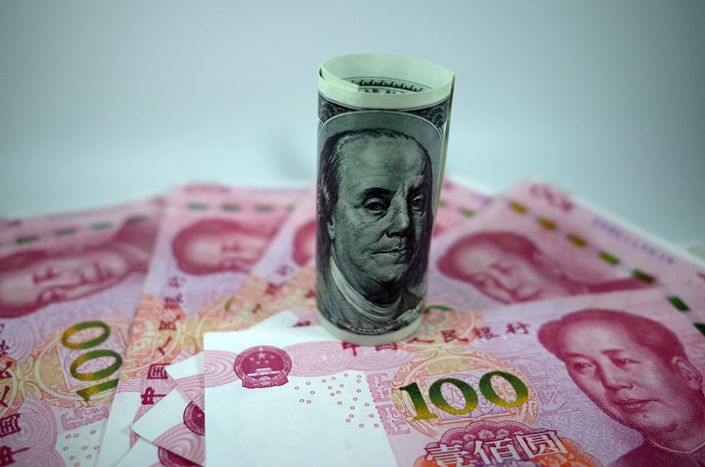Bonds Account for Growing Share of China’s External Debt

Bonds have been making up a growing share of China’s rising external debt, a development that the country’s foreign exchange regulator said shows confidence in the country’s economy.
China’s outstanding external debt, which includes money that the government, corporations and financial institutions owe to foreign creditors, rose 7.8% from the end of 2017 to $1.84 trillion at the end of the first quarter, according to data (link in Chinese) released by the State Administration of Foreign Exchange (SAFE) on Friday.
Debt securities, which include government and corporate bonds as well as shorter-term debt instruments, represented 21% of China’s outstanding external debt by the end of March, compared with 16% a year ago. Currency and deposits accounted for 26%, up from 25% a year ago; loans represented 23%, compared with 24% a year ago; and trade credit and prepayments accounted for 15%, compared with 19% a year ago.
“Debt securities have become a new driver of growth for external debt, showing foreign investors’ firm confidence in the Chinese economy,” a SAFE official said on Friday during a question-and-answer session with reporters.
As China’s debt market grows more open and as it has performed well so far this year, offshore institutional investors have continued to increase their holdings of onshore yuan-denominated bonds, with nearly 80% of holdings in medium- to long-term bonds, the official said.
The increase in external debt came primarily from debt securities, and currency and deposits, the SAFE official pointed out. The increase in currency and deposits accounted for 36% of the increase in external debt in the first quarter, primarily because foreign institutions and individuals have deposited more at domestic banks. Debt securities accounted for 34% of the increase in total external debt, the SAFE official said.
The trend is an extension of outstanding external debt at the end of 2017, when increases in deposits from foreign institutions and foreign institutions’ increasing purchases of bonds contributed 42% and 37% to the overall expansion of external debt respectively.
Wang Chunying, head of SAFE’s Balance of Payments Department, said earlier this year during a briefing on external debt figures at the end of 2017 that the bond connect between the Chinese mainland and Hong Kong has provided foreign investors with wider access to the domestic financial market, which was a key contributor to foreign institutions’ growing interest in holding more Chinese bonds.
Official data shows that in April and May, offshore institutions increased their holdings of yuan-denominated government bonds, holding nearly 7% of all yuan-denominated government bonds.
Bonds from real estate firms and local government financial vehicles (LGFVs) are not included in SAFE’s measure of external debt. However, according to public information gathered by Caixin, the National Development and Reform Commission (NDRC) approved at least 23 real estate companies and 21 LGFVs to issue bonds in the first half of this year. Those companies represented 37.5% of all NDRC-approved onshore companies applying to issue offshore debt.
Contact reporter Liu Xiao (liuxiao@caixin.com)

- 1China Moves to Tighten Air-Quality Standards as Beijing Reports Best-Ever Skies
- 2China Threatens EU After Carbon Border Tax Takes Effect
- 3Gansu Ex-Vice Governor Jailed 15 Years for Bribery, Insider Trading
- 4Cover Story: How Resource Nationalism Is Redrawing the Global Mineral Playbook
- 5Trump Orders Chinese-Controlled Firm to Unwind Purchase of U.S. Chip Assets
- 1Power To The People: Pintec Serves A Booming Consumer Class
- 2Largest hotel group in Europe accepts UnionPay
- 3UnionPay mobile QuickPass debuts in Hong Kong
- 4UnionPay International launches premium catering privilege U Dining Collection
- 5UnionPay International’s U Plan has covered over 1600 stores overseas






